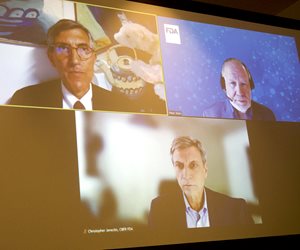Convergence: FDA officials on future COVID vaccine updates, remote inspections and hiring
 Audit/inspectionBiologics/ biosimilars/ vaccinesBiotechnologyNorth AmericaPharmaceuticalsProduct Lifecycle
Audit/inspectionBiologics/ biosimilars/ vaccinesBiotechnologyNorth AmericaPharmaceuticalsProduct Lifecycle Audit/inspectionBiologics/ biosimilars/ vaccinesBiotechnologyNorth AmericaPharmaceuticalsProduct Lifecycle
Audit/inspectionBiologics/ biosimilars/ vaccinesBiotechnologyNorth AmericaPharmaceuticalsProduct Lifecycle